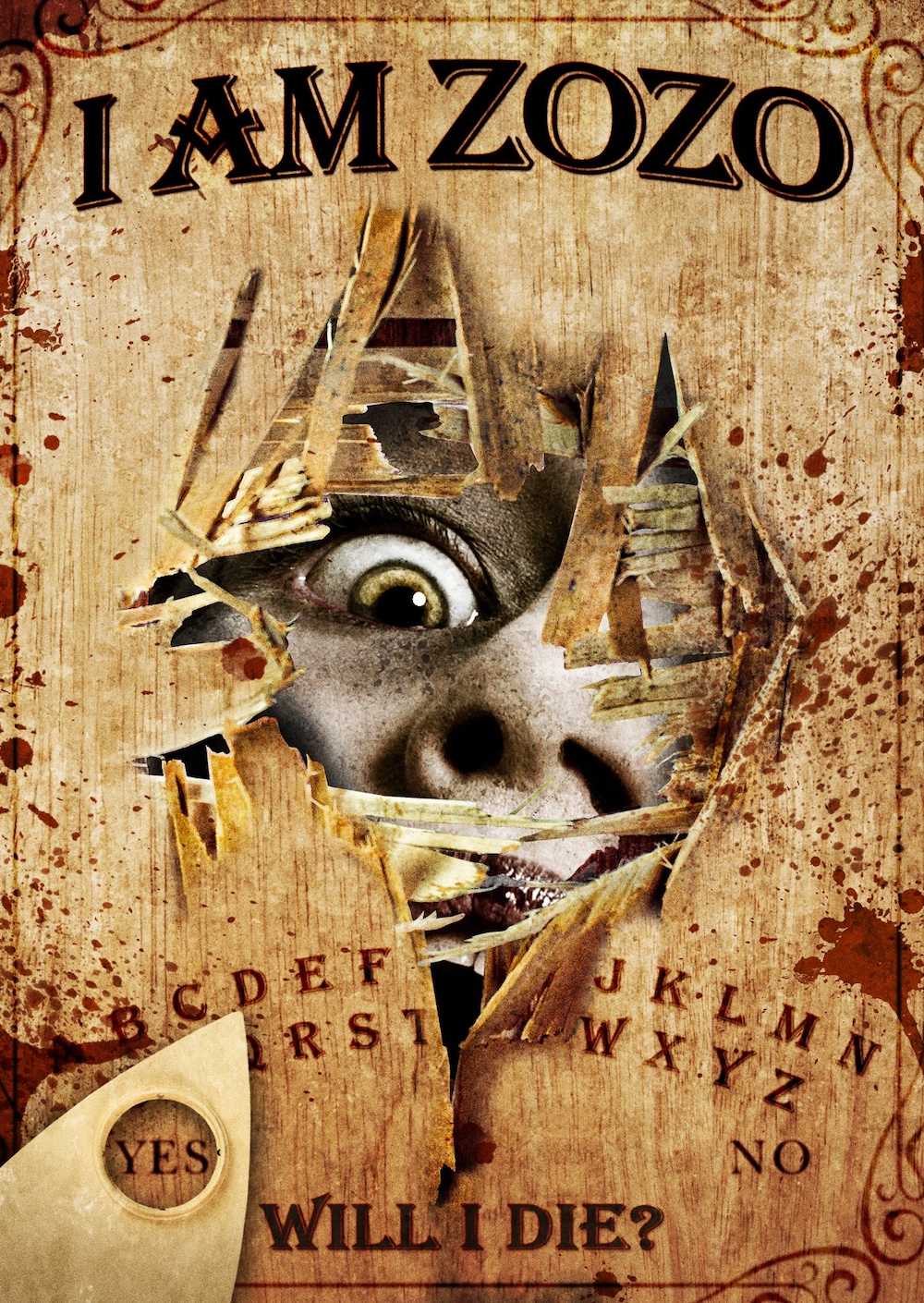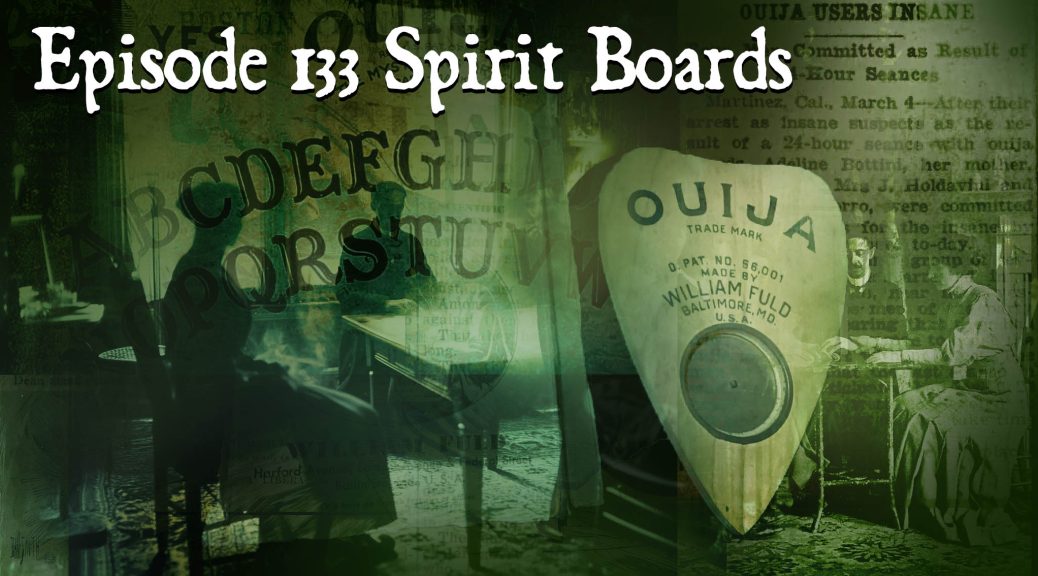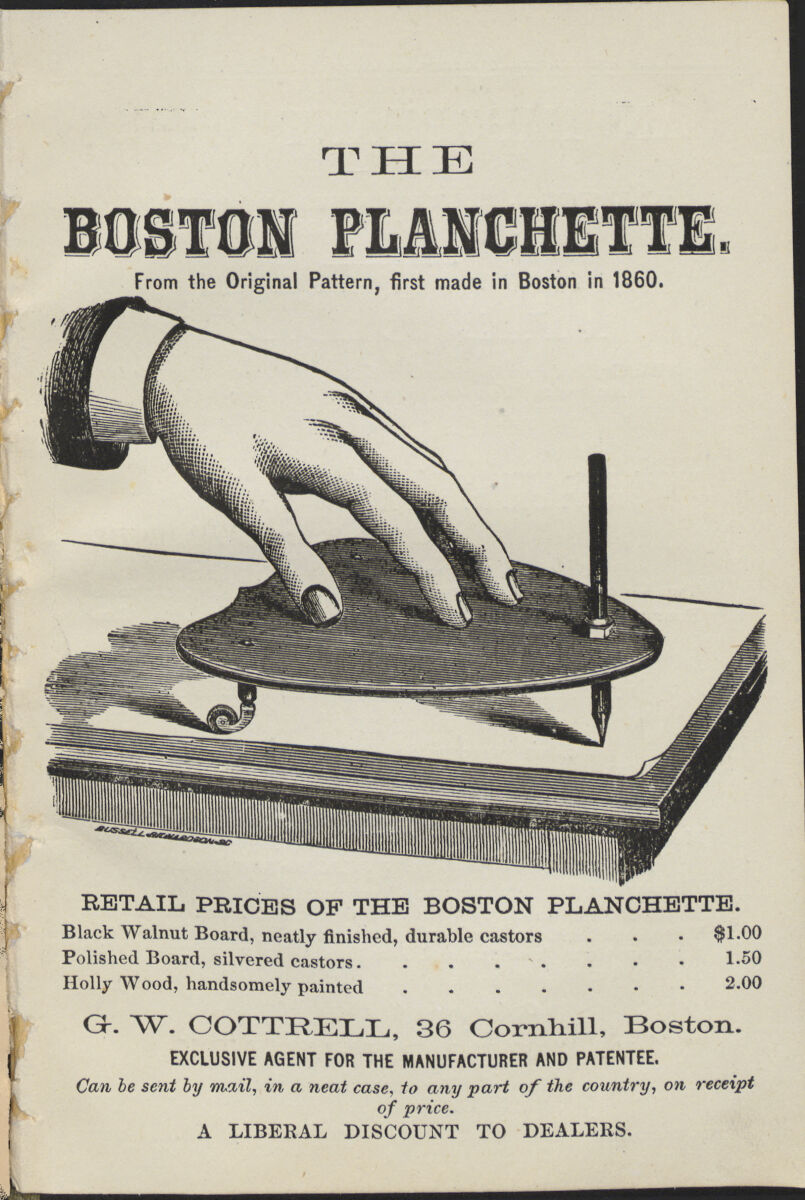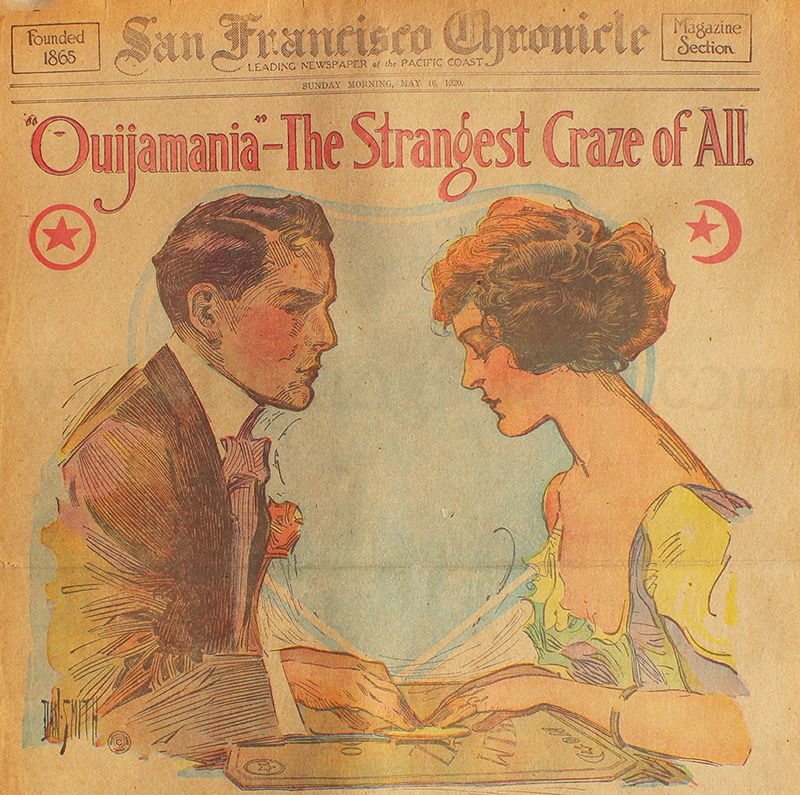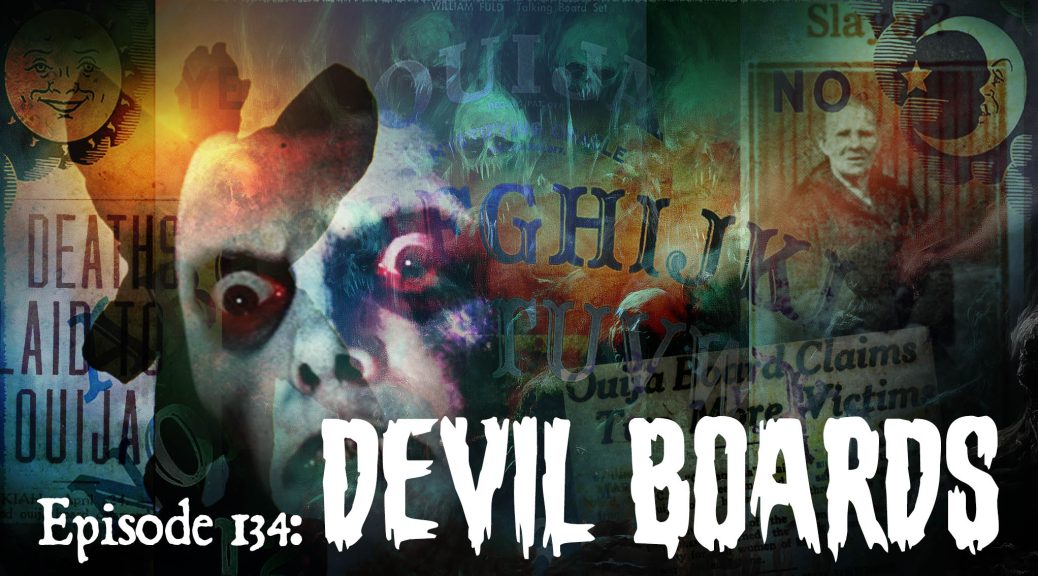
Devil Boards
Podcast: Play in new window | Download (Duration: 34:36 — 39.6MB)
Subscribe: Apple Podcasts | Spotify | Android | Podchaser | RSS | More
The devilish reputation Ouija boards enjoy in horror films is a relatively new phenomenon. In the Victorian era, they were regarded by “psychical researchers” as something to be embraced in a spirit of calm scientific inquiry, while Spiritualists saw in them a means of reaching out to those who’d passed into the “Summerland,” an anodyne realm of sweetness and light.
While these were the dominant attitudes of the day, the idea of spirit communications has always been fraught with a sense of the uncanny, tainted even by an association with witchcraft and the Devil. We’ll see this element already present in those first communications of the Spiritualist movement, the dialogues the Fox sisters with an unseen presence at first presumed to be a sort of devil.
As we saw in our previous episode, spirit-boards represent a particular danger to those with psychologically fragile constitutions. Beyond the instances of obsessive madness detailed previously, this episode examines a handful of cases from the 1920s and ’30s involving actual bloodshed — murder, suicide, and explicit invocations of the Devil.

Of course these remained isolated incidents, and historical distrust of the Ouija was generally low, and all but non-existent during the spiritual and occult explorations of the 1960s. But all of this would soon change with William Peter Blatty’s 1971 novel, The Exorcist, and its 1973 cinematic adaptation, both of which famously depict the Ouija board as a channel through which the Devil enters.
Some listeners may know that Blatty’s novel was inspired by actual reports of an exorcism that took place in America of the late 1940s, one involving a teenage boy rather than girl, a change Blatty said he’d made to help preserve the privacy of the boy.
Within the last decade, as individuals involved in these incidents have passed on, more information on this case has made its way to public scrutiny. In the last half of our show, we examine the role spirit-boards and Spiritualist practices played in these events as revealed by a day-to-day log kept by the lead exorcist during the rites . Mrs. Karswell reads for us the passages from the journal.
An element Blatty wove in with this source material was a specific identity of the demon possessing his fictional victim — Pazuzu, an ancient Mesopotamian wind spirit bringing dro ught, famine, storms, and all manner of ill fortune. As this figure was digested into pop culture over the next decades, a version of its name, “Zozo,” would eventually appear in the early 2000s as a destructive entity often channeled by unwary Ouija user. We take a look at this bit of evolving web-lore, showcased in paranormal shows, like Ghost Adventures and at the heart of the 2012 indie horror film I am Zozo.
